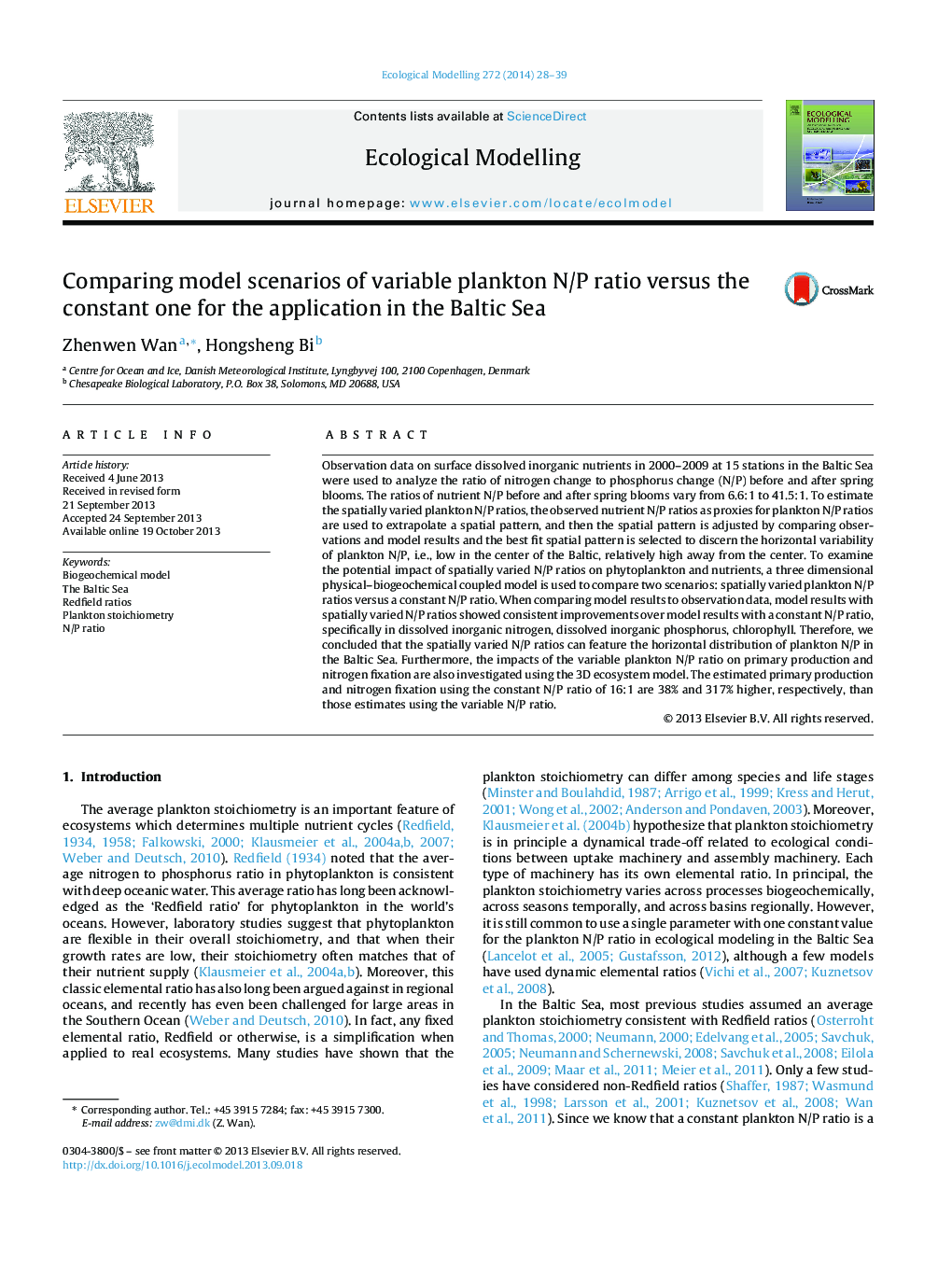| Article ID | Journal | Published Year | Pages | File Type |
|---|---|---|---|---|
| 6296980 | Ecological Modelling | 2014 | 12 Pages |
Abstract
Observation data on surface dissolved inorganic nutrients in 2000-2009 at 15 stations in the Baltic Sea were used to analyze the ratio of nitrogen change to phosphorus change (N/P) before and after spring blooms. The ratios of nutrient N/P before and after spring blooms vary from 6.6:1 to 41.5:1. To estimate the spatially varied plankton N/P ratios, the observed nutrient N/P ratios as proxies for plankton N/P ratios are used to extrapolate a spatial pattern, and then the spatial pattern is adjusted by comparing observations and model results and the best fit spatial pattern is selected to discern the horizontal variability of plankton N/P, i.e., low in the center of the Baltic, relatively high away from the center. To examine the potential impact of spatially varied N/P ratios on phytoplankton and nutrients, a three dimensional physical-biogeochemical coupled model is used to compare two scenarios: spatially varied plankton N/P ratios versus a constant N/P ratio. When comparing model results to observation data, model results with spatially varied N/P ratios showed consistent improvements over model results with a constant N/P ratio, specifically in dissolved inorganic nitrogen, dissolved inorganic phosphorus, chlorophyll. Therefore, we concluded that the spatially varied N/P ratios can feature the horizontal distribution of plankton N/P in the Baltic Sea. Furthermore, the impacts of the variable plankton N/P ratio on primary production and nitrogen fixation are also investigated using the 3D ecosystem model. The estimated primary production and nitrogen fixation using the constant N/P ratio of 16:1 are 38% and 317% higher, respectively, than those estimates using the variable N/P ratio.
Related Topics
Life Sciences
Agricultural and Biological Sciences
Ecology, Evolution, Behavior and Systematics
Authors
Zhenwen Wan, Hongsheng Bi,
